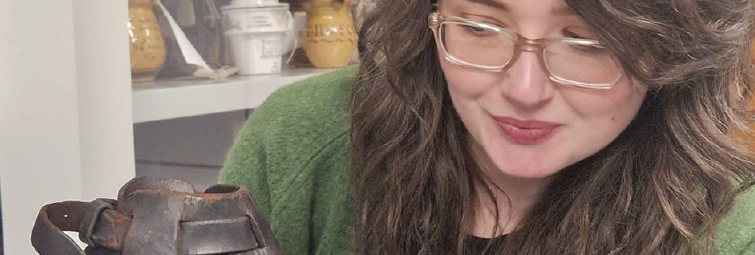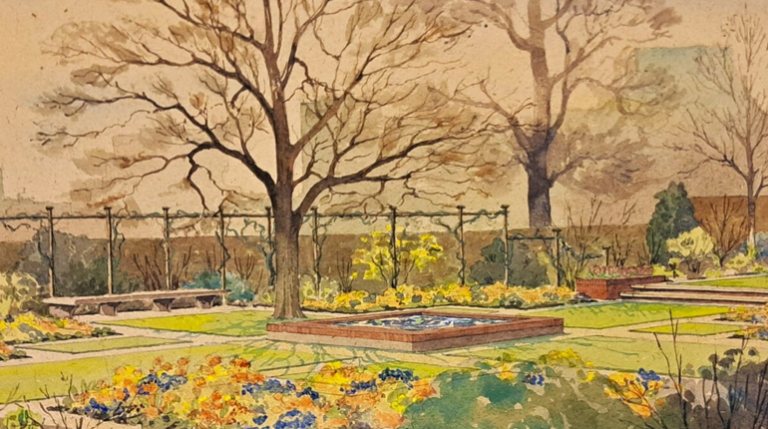‘I, Sheep’ and capturing the intangible countryside
MERL Curator Ollie Douglas revisits 'the Museum of the Intangible', a project which commissioned creative responses to parts of rural life that prove hard to capture in traditional forms. This moment of reflection comes as the final piece in this series of works – a film poem called I, Sheep – is ready to share.
-
Author
- Ollie Douglas
-
Published Date
- July 22, 2020

In the countryside, time is strange. The pace of life may appear glacial, and as old as the hills. Our countryside might seem as static and carefully tended as a museum object. But rural places are also dipped in seasonality and drenched in constant change. They follow the repeating rhythm of the annual round. Sheep farmers know that a flock sheared in summer will wear fleeces again by the colder months. If rams are put out at tupping time in autumn, lambs will appear the following spring. Like a quad bike wheel turning on an old drove road, the constant shift of the year spins round on its path, past meets present, and pebbles and dust are pushed up from the pitted surface of history. These clouds and projectiles are smaller events. Animals are born, injured, recover, or die. They frolic, gambol, sit or sleep. They are herded, follow, or stop to graze. These fleeting moments play out against time that is both cyclical and linear.
In recent years we have realised how difficult it is to capture the lived experience of country life and passage of rural time in an urban shed of inanimate things. After all, the countryside is a vibrant place, full of people, animals, and plants. It is packed with life and movement. The Museum of the Intangible brought people together with collections and helped us begin to think about how to move beyond fixed, stationary, and material ways of working. How could we do a better job of capturing intangible elements of the countryside? How could we improve the way we represent change itself? Museums are a mixture of lifeless things and living users, so it seemed obvious we needed people and activity to be part of our solution.
The creative partners we worked with rose to the challenge of an immobile collection in amazing, inspiring, energetic, and individual ways. Most of their reactions emerged quickly, within a year. They grappled with the difficulties of collecting the contemporary, made artworks to chart informal object use, retold folk tales in the galleries, linked craft practice to collections through community knitting events, and explored the biography of museum things via the surprising medium of clog dance choreography. Two written responses have also just been published in April of this year, capturing the experience of rural humanity through poems by Melissa Harrison and prose by Alexandra Harris.
The latest piece of work – I, Sheep – had a longer gestation and steps beyond the human world into new and uncharted territory. Like other commissions, it began life in object stores, beside a table of artefacts and archives, and in the musings of Museum of the Intangible participants. It was during one of the project sessions that Teresa Murjas began to think about the agency of rural animals and how portable camera technologies might herald new ways to capture livestock perspectives. She was keen to capture the intangible, more-than-human lives of the anonymous and voiceless sheep whose rural presence was so clearly marked in intricate engravings by artist Stanley Anderson, shepherding artefacts gathered by the journalist and collector H. J. Massingham, and the anthropomorphic narrative approaches of writer Dorothy Hartley. With filmmaker James Rattee on board and with the help of the poet Jack Thacker, a small team soon emerged who would work to realise this inventive vision.
As this work is shared here for the first time, we invite you to immerse yourselves in a film-poem that unites the different kinds of time that give shape to our rural heritage. I, Sheep captures the story of a single ewe and links it to the lives of both farm and farming family. Words and images hark back to a long history of pastoral texts, alluding to a timelessness that dominates ideas of the rural, as well as to the shepherding calendar and the place of seasonality in the countryside. The sheep’s-eye perspective adds immediacy, and knits individuality, microhistory, and a sense of momentary change into the finished film. This is a powerful, personal, and profoundly thought-provoking response and we hope you enjoy it as much as we do.
I, Sheep will premiere on The MERL’s YouTube channel at 12pm on Friday the 24th July. Please join us then for this deeply moving exploration of rural life and its beautiful depiction of intangible rural heritage. Until then, learn more about the filmpoem and its creation on the I, Sheep project page.





